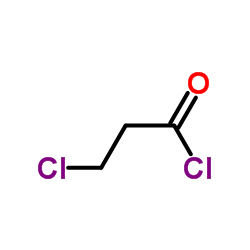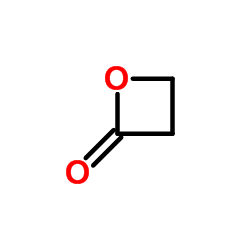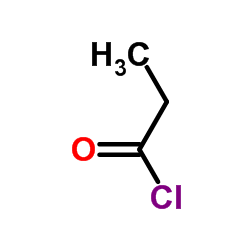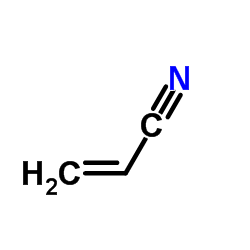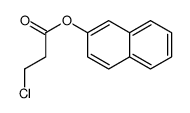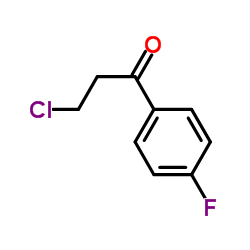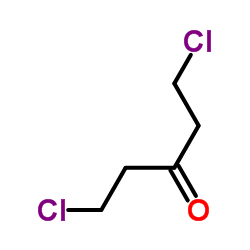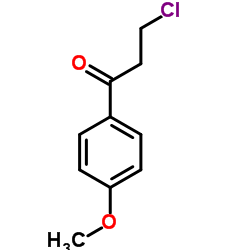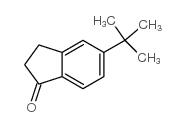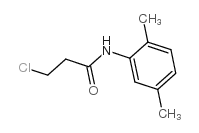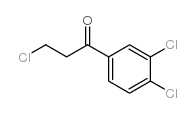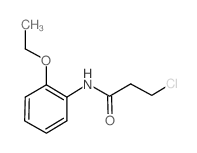625-36-5
| 中文名 | 3-氯丙酰氯 |
|---|---|
| 英文名 | 3-Chloropropionyl chloride |
| 中文别名 |
β-氯丙酰氯
3-氯代丙酰氯 |
| 英文别名 |
MFCD00000747
3-Chloropropinyl chloride b-Chloropropanoyl chloride Chloropropionyl chloride 3-chloro-propanoylchlorid 3-chloro propionic acid chloride 3-chloro-n-propionyl chloride β-Chloropropionoyl chloride β-Chloropropanoyl chloride EINECS 210-890-4 3-Chloropropionyl chloride 3-Chloropropionyl ch β-Chloropropionyl chloride 3-Chlorpropionylchlorid 3-Chloropropanoyl chloride 3-Chloropropionyl chlorode Propanoyl chloride, 3-chloro- Propionyl chloride, 3-chloro- |
| 密度 | 1.3±0.1 g/cm3 |
|---|---|
| 沸点 | 144.9±13.0 °C at 760 mmHg |
| 熔点 | -32 °C |
| 分子式 | C3H4Cl2O |
| 分子量 | 126.969 |
| 闪点 | 61.7±0.0 °C |
| 精确质量 | 125.963921 |
| PSA | 17.07000 |
| LogP | 1.06 |
| 外观性状 | 透明至棕色液体 |
| 蒸汽压 | 5.0±0.3 mmHg at 25°C |
| 折射率 | 1.437 |
| 储存条件 | 存放在充有干爽惰性气体的容器内,并放在阴凉,干爽处。储存的地方必须上锁,钥匙必须交给技术专家和他们的助手保管。避免湿气和水分。远离氧化剂,水源,勿与强碱一起存放。 |
| 稳定性 | 远离氧化物,水分,碱,活性金属。 |
| 水溶解性 | reacts |
| 分子结构 | 1、 摩尔折射率:25.67 2、 摩尔体积(cm3/mol):97.9 3、 等张比容(90.2K):233.4 4、 表面张力(dyne/cm):32.2 5、 极化率(10-24cm3):10.17 |
| 计算化学 | 1.疏水参数计算参考值(XlogP):1.3 2.氢键供体数量:0 3.氢键受体数量:1 4.可旋转化学键数量:2 5.互变异构体数量:无 6.拓扑分子极性表面积17.1 7.重原子数量:6 8.表面电荷:0 9.复杂度:52.8 10.同位素原子数量:0 11.确定原子立构中心数量:0 12.不确定原子立构中心数量:0 13.确定化学键立构中心数量:0 14.不确定化学键立构中心数量:0 15.共价键单元数量:1 |
| 更多 | 1. 性状:无色液体。 2. 密度(g/mL,25/4℃):1.325 3. 相对蒸汽密度(g/mL,空气=1):未确定 4. 熔点(ºC):-32 5. 沸点(ºC,常压):143-145 6. 沸点(ºC,5.2kPa):未确定 7. 折射率:1.457 8. 闪点(ºC):59 9. 比旋光度(º):未确定 10. 自燃点或引燃温度(ºC):460 11. 蒸气压(kPa,25ºC):10 12. 饱和蒸气压(kPa,60ºC):未确定 13. 燃烧热(KJ/mol):未确定 14. 临界温度(ºC):未确定 15. 临界压力(KPa):未确定 16. 油水(辛醇/水)分配系数的对数值:未确定 17. 爆炸上限(%,V/V):未确定 18. 爆炸下限(%,V/V):未确定 19. 溶解性:微溶于水。 |
Synonym:None Section 2 - COMPOSITION, INFORMATION ON INGREDIENTS
Risk Phrases: 10 14 26 35 Section 3 - HAZARDS IDENTIFICATION EMERGENCY OVERVIEW
Flammable. Reacts violently with water. Very toxic by inhalation. Causes severe burns.Corrosive.Lachrymator (substance which increases the flow of tears). Potential Health Effects Eye: Causes eye burns. Lachrymator (substance which increases the flow of tears). Skin: Causes severe burns with delayed tissue destruction. Ingestion: May cause severe and permanent damage to the digestive tract. Causes gastrointestinal tract burns. Inhalation: Causes chemical burns to the respiratory tract. Inhalation may be fatal as a result of spasm, inflammation, edema of the larynx and bronchi, chemical pneumonitis and pulmonary edema. Vapors may cause dizziness or suffocation. Chronic: None Section 4 - FIRST AID MEASURES Eyes: Get medical aid immediately. Do NOT allow victim to rub eyes or keep eyes closed. Extensive irrigation with water is required (at least 30 minutes). Skin: Get medical aid immediately. Immediately flush skin with plenty of water for at least 15 minutes while removing contaminated clothing and shoes. Wash clothing before reuse. Destroy contaminated shoes. Ingestion: Do not induce vomiting. If victim is conscious and alert, give 2-4 cupfuls of milk or water. Never give anything by mouth to an unconscious person. Get medical aid immediately. Inhalation: Get medical aid immediately. Remove from exposure and move to fresh air immediately. If not breathing, give artificial respiration. If breathing is difficult, give oxygen. Do NOT use mouth-to-mouth resuscitation. Notes to Physician: Section 5 - FIRE FIGHTING MEASURES General Information: As in any fire, wear a self-contained breathing apparatus in pressure-demand, MSHA/NIOSH (approved or equivalent), and full protective gear. Vapors may form an explosive mixture with air. Vapors can travel to a source of ignition and flash back. During a fire, irritating and highly toxic gases may be generated by thermal decomposition or combustion. Water Reactive. Material will react with water and may release a flammable and/or toxic gas. Use water spray to keep fire-exposed containers cool. Containers may explode in the heat of a fire. Flammable liquid and vapor. Vapors may be heavier than air. They can spread along the ground and collect in low or confined areas. May ignite or explode on contact with steam or moist air. Extinguishing Media: Use dry sand or earth to smother fire. Do NOT use water directly on fire. Use water spray to cool fire-exposed containers. Use foam, dry chemical, or carbon dioxide. Do NOT use straight streams of water. Contact professional fire-fighters immediately. Section 6 - ACCIDENTAL RELEASE MEASURES General Information: Use proper personal protective equipment as indicated in Section 8. Spills/Leaks: Absorb spill with inert material (e.g. vermiculite, sand or earth), then place in suitable container. Clean up spills immediately, observing precautions in the Protective Equipment section. Remove all sources of ignition. Use a spark-proof tool. Provide ventilation. Do not expose spill to water. A vapor suppressing foam may be used to reduce vapors. Section 7 - HANDLING and STORAGE Handling: Do not allow water to get into the container because of violent reaction. Ground and bond containers when transferring material. Use spark-proof tools and explosion proof equipment. Do not breathe dust, vapor, mist, or gas. Do not get in eyes, on skin, or on clothing. Empty containers retain product residue, (liquid and/or vapor), and can be dangerous. Keep container tightly closed. Keep away from heat, sparks and flame. Use with adequate ventilation. Use only in a chemical fume hood. Discard contaminated shoes. Do not pressurize, cut, weld, braze, solder, drill, grind, or expose empty containers to heat, sparks or open flames. Storage: Keep away from heat, sparks, and flame. Keep away from sources of ignition. Store in a cool, dry place. Keep container closed when not in use. Store in a tightly closed container. Keep away from water. Flammables-area. Section 8 - EXPOSURE CONTROLS, PERSONAL PROTECTION Engineering Controls: Use explosion-proof ventilation equipment. Facilities storing or utilizing this material should be equipped with an eyewash facility and a safety shower. Use adequate ventilation to keep airborne concentrations low. Exposure Limits CAS# 625-36-5: Personal Protective Equipment Eyes: Wear appropriate protective eyeglasses or chemical safety goggles as described by OSHA's eye and face protection regulations in 29 CFR 1910.133 or European Standard EN166. Skin: Wear appropriate protective gloves to prevent skin exposure. Clothing: Wear appropriate protective clothing to minimize contact with skin. Respirators: A respiratory protection program that meets OSHA's 29 CFR 1910.134 and ANSI Z88.2 requirements or European Standard EN 149 must be followed whenever workplace conditions warrant respirator use. Section 9 - PHYSICAL AND CHEMICAL PROPERTIES Physical State: Liquid Color: clear, colorless Odor: Stench pH: Not available. Vapor Pressure: 10 mbar @ 20 deg C Viscosity: 1.4 mPas 20 deg C Boiling Point: 143 - 145 deg C @ 760.00mm Hg Freezing/Melting Point: -32 deg C Autoignition Temperature: 490 deg C ( 914.00 deg F) Flash Point: 30 deg C ( 86.00 deg F) Explosion Limits, lower: 8.80 vol % Explosion Limits, upper: 20.20 vol % Decomposition Temperature: 30 deg C Solubility in water: Specific Gravity/Density: 1.3300g/cm3 Molecular Formula: C3H4Cl2O Molecular Weight: 126.97 Section 10 - STABILITY AND REACTIVITY Chemical Stability: Combines vigorously or explosively with water. Conditions to Avoid: Incompatible materials, ignition sources, excess heat, exposure to moist air or water. Incompatibilities with Other Materials: Acids, oxidizing materials, water. Hazardous Decomposition Products: Hydrogen chloride, phosgene, carbon monoxide, carbon dioxide. Hazardous Polymerization: Has not been reported. Section 11 - TOXICOLOGICAL INFORMATION RTECS#: CAS# 625-36-5 unlisted. LD50/LC50: Not available. Not available. Carcinogenicity: 3-CHLOROPROPIONYL CHLORIDE - Not listed by ACGIH, IARC, or NTP. Section 12 - ECOLOGICAL INFORMATION Section 13 - DISPOSAL CONSIDERATIONS Dispose of in a manner consistent with federal, state, and local regulations. Section 14 - TRANSPORT INFORMATION IATA Shipping Name: TOXIC LIQUID, CORROSIVE, ORGANIC, N.O.S.* Hazard Class: 6.1 (8) UN Number: 2927 Packing Group: II IMO Shipping Name: TOXIC LIQUID, CORROSIVE, ORGANIC, N.O.S. Hazard Class: 6.1 (8) UN Number: 2927 Packing Group: II RID/ADR Shipping Name: TOXIC LIQUID, CORROSIVE, ORGANIC, N.O.S. Hazard Class: 6.1 UN Number: 2927 Packing group: II Section 15 - REGULATORY INFORMATION European/International Regulations European Labeling in Accordance with EC Directives Hazard Symbols: T+ C Risk Phrases: R 10 Flammable. R 14 Reacts violently with water. R 26 Very toxic by inhalation. R 35 Causes severe burns. Safety Phrases: S 8 Keep container dry. S 9 Keep container in a well-ventilated place. S 16 Keep away from sources of ignition - No smoking. S 33 Take precautionary measures against static discharges. S 36/37/39 Wear suitable protective clothing, gloves and eye/face protection. S 38 In case of insufficient ventilation, wear suitable respiratory equipment. S 45 In case of accident or if you feel unwell, seek medical advice immediately (show the label where possible). WGK (Water Danger/Protection) CAS# 625-36-5: 1 Canada CAS# 625-36-5 is listed on Canada's NDSL List. CAS# 625-36-5 is not listed on Canada's Ingredient Disclosure List. US FEDERAL TSCA CAS# 625-36-5 is listed on the TSCA inventory. SECTION 16 - ADDITIONAL INFORMATION N/A |
|
生态学数据: 对水稍微有危害的,不要让未者大量产品接触地下水,水道或者污水系统。若无政府许可,勿将材料排入周围环境。
|
| 符号 |


GHS05, GHS06 |
|---|---|
| 信号词 | Danger |
| 危害声明 | H302-H314-H330 |
| 补充危害声明 | Reacts violently with water. |
| 警示性声明 | P260-P280-P284-P305 + P351 + P338-P310 |
| 个人防护装备 | Faceshields;full-face respirator (US);Gloves;Goggles;multi-purpose combination respirator cartridge (US);type ABEK (EN14387) respirator filter |
| 危害码 (欧洲) | T+:Verytoxic; |
| 风险声明 (欧洲) | R10;R14;R22;R26;R35 |
| 安全声明 (欧洲) | S23-S26-S36/37/39-S45-S38-S16-S8 |
| 危险品运输编码 | UN 3390 6.1/PG 1 |
| WGK德国 | 1 |
| 包装等级 | I |
| 危险类别 | 6.1 |
| 海关编码 | 29159080 |
| 上游产品 10 | |
|---|---|
| 下游产品 10 | |
| 海关编码 | 2915900090 |
|---|---|
| 中文概述 | 2915900090. 其他饱和无环一元羧酸及其酸酐(酰卤、过氧)化物、过氧酸及其卤化、硝化、磺化、亚硝化衍生物. 增值税率:17.0%. 退税率:9.0%. 监管条件:AB(入境货物通关单,出境货物通关单). 最惠国关税:5.5%. 普通关税:30.0% |
| 申报要素 | 品名, 成分含量, 用途 |
| 监管条件 | A.入境货物通关单 B.出境货物通关单 |
| 检验检疫 | R.进口食品卫生监督检验 S.出口食品卫生监督检验 M.进口商品检验 N.出口商品检验 |
| Summary | 2915900090 other saturated acyclic monocarboxylic acids and their anhydrides, halides, peroxides and peroxyacids; their halogenated, sulphonated, nitrated or nitrosated derivatives VAT:17.0% Tax rebate rate:9.0% Supervision conditions:AB(certificate of inspection for goods inward,certificate of inspection for goods outward) MFN tariff:5.5% General tariff:30.0% |


